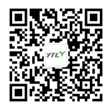When it comes to monitoring and managing energy consumption, traditional energy meters have been the go-to solution for decades. However, the rise of technology and the need for more comprehensive energy management has led to the development of multi-function energy meters. These advanced devices offer a range of benefits and capabilities that go beyond what traditional meters can provide.
One key difference between the two is the amount and quality of data they offer. Traditional energy meters typically provide only basic information such as total energy usage. In contrast, multi-function energy meters offer detailed real-time data on various parameters like voltage, current, power factor, and frequency. This enhanced level of information allows users to gain a better understanding of their energy usage patterns and identify potential areas of improvement.
.jpg)
.jpg)
Another significant advantage of multi-function energy meters is their ability to measure and monitor energy usage on a more granular level. Traditional meters usually measure energy consumption at the whole-building level, providing little insight into individual appliances or circuits. Multi-function energy meters, on the other hand, can be installed at specific points of consumption, enabling users to identify energy-intensive appliances and track their usage. This level of precision helps in identifying energy wastage and making informed decisions on optimizing energy consumption.
In terms of functionality, multi-function energy meters often come equipped with features that enhance energy management. For example, they can provide real-time alerts or notifications when energy consumption exceeds a certain threshold or when an appliance is left running unnecessarily. Some advanced models even offer the ability to remotely control and schedule appliances, optimizing energy usage based on the user's preferences and requirements.
One of the key advantages of traditional energy meters is their simplicity and reliability. They are relatively straightforward devices that have been used for many years with proven accuracy. However, multi-function energy meters have undergone significant advancements in technology and are designed to meet modern energy management needs. They incorporate advanced algorithms and digital communication capabilities that allow for more precise measurements and data analysis.
Furthermore, multi-function energy meters often have the ability to integrate with other smart home devices or energy management systems. This allows for seamless integration into a larger energy management ecosystem and enables users to have a holistic view of their energy consumption. Traditional energy meters, on the other hand, function as standalone devices with limited connectivity options.
In conclusion, while traditional energy meters have served their purpose for many years, the advantages offered by multi-function energy meters make them a superior choice for modern energy management. With their ability to provide detailed and granular data, along with advanced features for optimization and control, multi-function energy meters empower users to make more informed decisions about their energy usage. As technology continues to advance, it is likely that multi-function energy meters will become the standard for efficient energy management in the future.

 英语
英语 中文简体
中文简体


